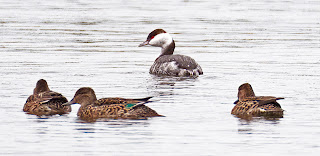NATURE MONCTON NATURE NEWS
October 14, 2023
To respond by e-mail, please address your
message to the information line editor, nelsonpoirier435@gmail.com .
Please advise both the editor at nelsonpoirier435@gmail.com and the proofreader nicholsl@eastlink.ca if any errors are noted in wording or photo labelling.
For more information on Nature Moncton, check the website at www.naturemoncton.com .
Edited by Nelson Poirier nelsonpoirier435@gmail.com
Proofreading courtesy of
Louise Nichols at nicholsl@eastlink.ca
**
**Brian Stone, Louise
Nichols, and Wendy Sullivan showed up to Fred and Susan Richards' Taylor
Village home on Saturday afternoon with hopes that a clear spot in the cloud
cover would open and allow them to see the 9% partial Solar Eclipse that
was due to be at its peak at 2:32 pm. The clouds were heavy as the time
approached and at 1:52 pm, just a bit too early, a small patch of near
transparency arrived and the beginning of the partial eclipse peeked through
just long enough for one hazy but decent photograph to be taken. It wasn't the
full 9% but was still worth the wait and effort to see and record such an
infrequent event. The image is yellow/orange due to the colour of the safe
solar filter taped to the front of the camera lens and several dark sunspots are
visible on the Sun's surface.
Susan
Richards also includes a photo of the group in their safe-for-viewing eyewear.
The box in the background (arrowed) was arranged to allow the viewing with a
pinhole without looking directly at the sun.
On his way
back from Taylor Village on Saturday afternoon after a less successful than hoped-for
eclipse outing, Brian Stone stopped in at the Arthur St./Grand Pre St. lagoon in
Memramcook to get a few photos of the Horned Grebe reported to be hanging
out there. A couple of Green-winged Teal Ducks got included in one photo along
with the grebe.
(Editor’s note:
this is an excellent photo of a Horned Grebe that we often have to observe with
scopes far off in the distance, identifying it by silhouette!)
**Deana and Peter Gadd went up the north shore of Miramichi Bay on
Saturday and were able to see a few interesting birds. They had a good look at
a Common Loon at Oak Point and a couple of Red-throated Loons at
Hay Island. One was photographed having contentedly captured a Striped Bass. Also on Hay Island, there
were 6 Dunlins.
At the water-treatment ponds in Neguac they watched a large group of Bonaparte's Gulls, carefully estimating about 180.
There were 3 groups of about 60 circling around each of 3 bubbly
aerators, pecking away at the water.
Saturday was the Gadd’s effort as part of eBird’s October Big Day.
**Jamie Burris points out there are plenty of flowers
still in bloom in their Riverview backyard and the bees and butterflies are
enjoying them.
Jamie also found some Black Nightshade
growing on the south side of their house showing ripe fruit, developing fruit,
and white flowers all on the same plant.
(Editor’s note: there has been only one entry
of Black Nightshade on Nature News, which was by the editor several years ago, which left the editor to wonder how common this plant is in New Brunswick.
A consultation with Gart Bishop gave an
explanation. Gart commented “Black
Nightshade (Solanum ptychanthum) is considered native in much of eastern
North America, but introduced in NB. This is not something I (Gart) have seen
(at least I don’t remember seeing it). The Flora of NB says, 'Introduced into
waste areas and disturbed sites in Carleton, Kent, Northumberland and Saint
John Counties.'")
**Aldo Dorio started to see flocks of Bonaparte's
Gulls appearing at Hay Island on Saturday. All seem to be nonbreeding or
immature birds.
Aldo also photographed the common Ring-billed
Gull. Most of our now-resident Ring-billed Gulls will be leaving New Brunswick
for more southerly areas over the next few months.
Note the blotchy marks on the head, which is
typical of all our medium to large-sized adult gulls as they take on winter
plumage, except for the Great Black-backed Gull.
**While
visiting in Cocagne Saturday, Georges Brun photographed a flock of
approximately 160+ Common Eider. They came from the big arch
bridge at the mouth of the river.
A Dark-eyed
Junco came by to visit Georges’ backyard to cooperate for a close-up photo.
George
leaves a comment for photographers. A few years ago while taking pictures,
numerous birds would high-tail out of their perch when he would take a
photo. Then he realized that on the camera, one of the lights for either
red eye or to assist with the photo would come on, and the object he was trying
to capture would leave very quickly. Georges saw this a few days ago when
folks were photographing the American Avocet at Bis Marsh.
Just a
reminder if some of the photographers have this similar setup!
Nature Moncton
**
.%20OCT.%2014,%202023.%20BRIAN%20STONE.jpg)



.jpg)
.jpg)
.jpg)







.jpg)
